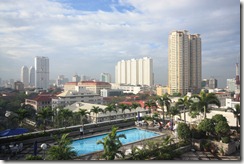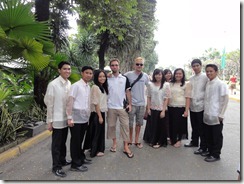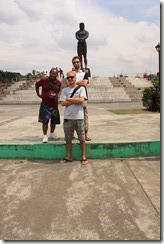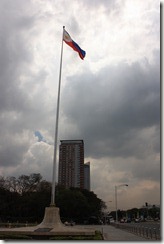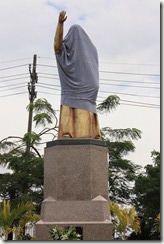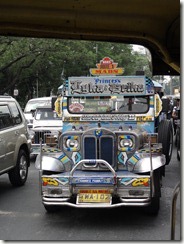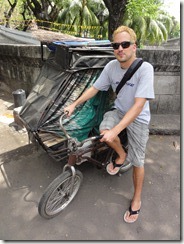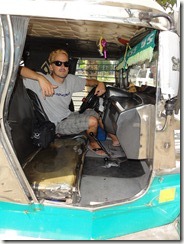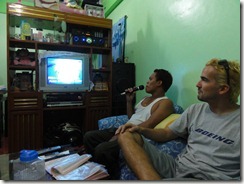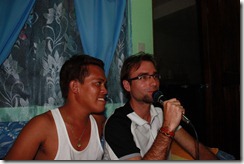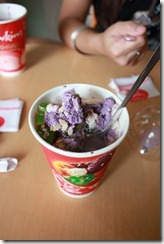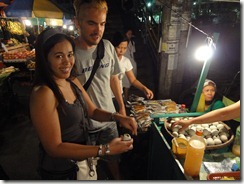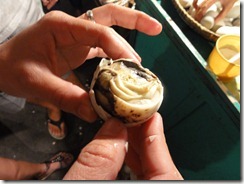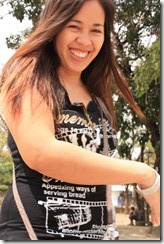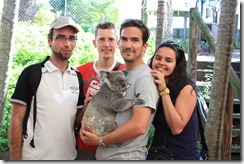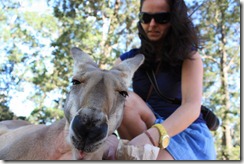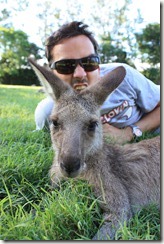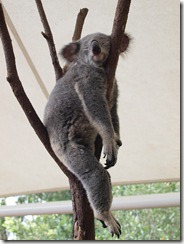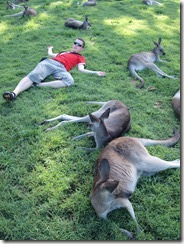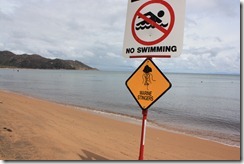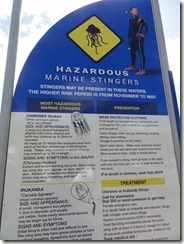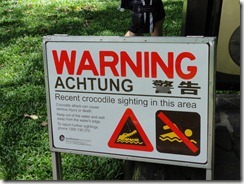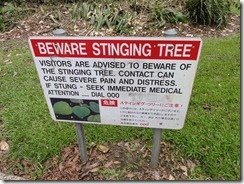Puerto Princesa itself attracts a number of Filipino and foreign tourists as well, mainly because of the nearby Subterranean River National Park, which is enlisted as Unesco World Heritage site. The mayor, Edward S. Hagedorn (we remember his name, because he kinda has a cult of personality in Puerto Princesa) does his best to develop the region, and a huge number of visitors arrive every day to the caves. The crowd is so big that the whole visit gets a little bit spoiled, so if you can, try to avoid the peak times between 10h and 15h, and go when there are no organized tours. The cave itself is nice to see once, and your Taglish speaking tourguide will enthusiastically tell you a number of times "Sir, mam, we are inside the mountain, sir, mam!"
Once you get to El Nido, you can relax a bit. The city is not much developed yet, no big hotel complexes, most little hotels you can reach by walking on the sandy beach and ask them if they have availability. You can score a nice seafront room for very little money, although at most places you will have issues with electicity and water supply:) Also, dont expect to have any ATMs in the city, so better cash-up before:) The size of the place is just comfortable enough to walk around, and after a few days you will actually start to recognize the same people over and over again, and they will also recognize you:) A lot of places have a slight Bob Marley-complex, which is quite common not only here, but for some reason in the south of Thailand also.
Definitely recommended places are Pukka bar (Ryan, the owner is a cool Marley fan:)), and Squidos for a nice seafood dinner and shakes.
The most common activities in the city are scuba diving and the island hopping tours. The island hopping service is standardized, and you can choose between tour A, B and C. Prices are also pretty much the same everywhere. We embarked on two different tours and both times we were amazed by the natural rock formations, the beaches, the underwater wildlife and the majestic lunch we had. All these for a more than reasonable price!
Not described in any guidebooks, yet one of the most amazing things I have ever seen were the fluorescent planktons right in front of our hotel. We went out for some night swimming and at first we didnt believe our own eyes: whenever we made a movement with our limbs in the water, hundreds of little starlights were flashing up then fading away. The whole experience was surrealistic and a little bit like swimming in star-dust, or like the famous glow effect from around Patrick Swayze in Ghost. This we couldn't capture with our cameras, you have to see it with your own eyes!
